
Don Artillery
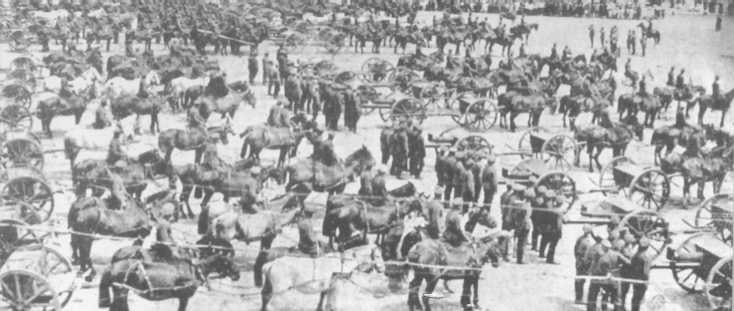
Don Artillery on parade, probably the Young Army in August 1919.
The Don had supplied a lot of artillery to the Imperial army, so was not as reliant on non-Cossacks to man the guns as the Terek and Kuban.
31st Gundorovskiy Light Battery
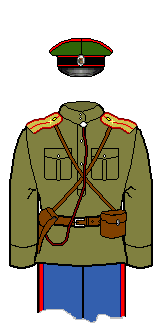 |
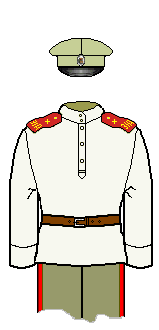 |
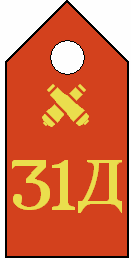 |
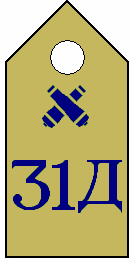 |
|---|---|---|---|
| Captain: dress uniform | Gunner: field uniform | Shoulderboard: Gunner | Shoulderboard: Gunner |
Artillery wore standard Don uniforms except for furazhka, coloured shoulderboards and collar tabs, which were standard artillery colours.
Shoulderboards were red with yellow cipher for foot artillery. Khaki side had a dark blue cipher. Buttons, lace and markings were in gold.
The cipher was the battery number, plus a Д for Don.
2nd Don Horse Battery
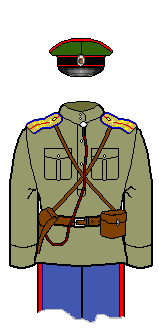 |
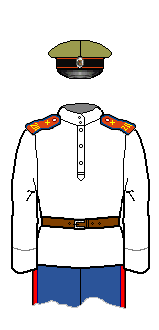 |
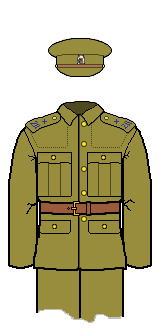 |
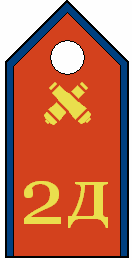 |
|---|---|---|---|
| Captain: dress uniform | Gunner: dress uniform | Gunner: British uniform | Shoulderboard: Horse gunner |
Horse batteries differed only from light batteries in that the coloured side of the shoulderboards had a blue piped edge.
The WWI uniform had horse-gunners retain their blue trousers even in field dress, unlike normal artillery.
The Don appeared to have no horse mountain units, but they were the same as normal horse artillery, but with black trousers and a Г added to the cipher.
9th Don Howitzer Battery
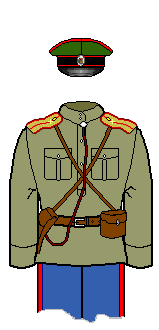 |
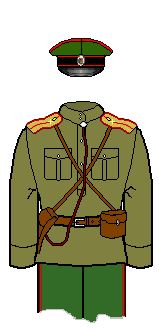 |
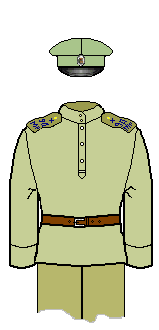 |
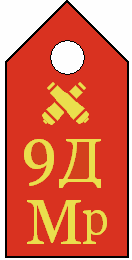 |
|---|---|---|---|
| Captain: dress uniform | Captain: VA loan officer | Gunner: field uniform | Shoulderboard: Gunner |
Howitzer batteries dressed identically to light batteries except the cipher was the battery number, plus a Д for Don and Мр for Howitzer (Mortira).
Heavy batteries would likewise be exactly the same, except they added Тж to the cipher. Rifle Artillery added a С.
One unit listed in Volkov is called the 3rd Don Plastoon Battery. If the above scheme was carried over, then presumably they added a П.
The Don had a reasonable supply of horse artillery officers, but they had not needed any foot artillery officers prior to 1918. The differences between horse and light artillery were minimal so men could cross easily, but the VA probably lent the Don experienced heavy artillery officers. The non-Cossack uniform differed mainly in the trousers, which were dark green with a thin red stripe, plus small details like wearing spurs.
6th Life-Guard Cossack Battery
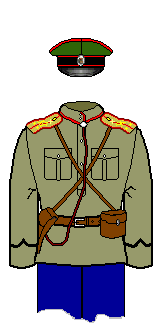 |
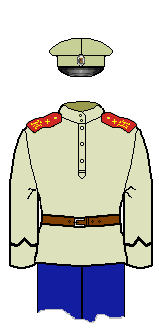 |
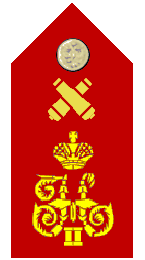 |
|
|---|---|---|---|
| Captain: dress uniform | Gunner: field uniform | Shoulderboard: Gunner |
This was the revived former Imperial Guard Don Cossack Horse Battery and almost certainly was largely crewed by former members of that unit. Oddly it kept its number rather than becoming the 1st Battery, and was not placed with the former Guard Cavalry, but instead was grouped with the 5th Don Horse Battery in the 3rd Don Horse Division of the Young Army.
The official Tsarist uniform was fairly similar to normal line artillery, except the trousers were dark blue without stripes, they had pointed cuffs with black piping and their collars were piped red. (A similar figure is D2 in the Whites Osprey, although as he is foot artillery the lace is different colours and he has green trousers.)
The monogram was Tsar Nicholas'. The khaki side had this in dark blue, with red piping around the outside. It seems likely the unit wore the red side during the Civil War though.
We have a brief description of the battery's flag in 1914, although some of the details are a bit unclear. It may have looked somewhat like this (it's not clear how the half-red, half-black is arranged, nor how the monogram is placed "on top"):

Uniform Details
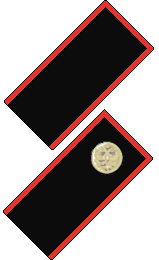 |
 |
|
| Greatcoat collar tabs | Dress papakha: men and officers |
All artillery had the same greatcoat tabs, red piping on black. Officers and NCOs had gold buttons on them.
Artillery seem to have mostly favoured furazhkas, though presumably papakhas were worn in cold weather. It appears that the officers' cross was yellow/gold, to match the buttons.
A fair number of British guns were supplied to the Don. On the whole the 3-inch light guns were not liked and gunners struggled to maintain and use them and their ammunition properly. The heavy howitzers, however, were sought after.
British uniforms were also supplied, either to replace individual items to to kit out an entire unit. As usual, the Russians tried to keep much of their old uniforms. British boots and puttees were worn, but knee-boots were preferred. The caps might be "Russified" by adding coloured bands or by painting the cloth the appropriate colour. Shoulderboards sometimes took some time to be added.
Photos
We have assembled various photographs of Don soldiers in a separate page.